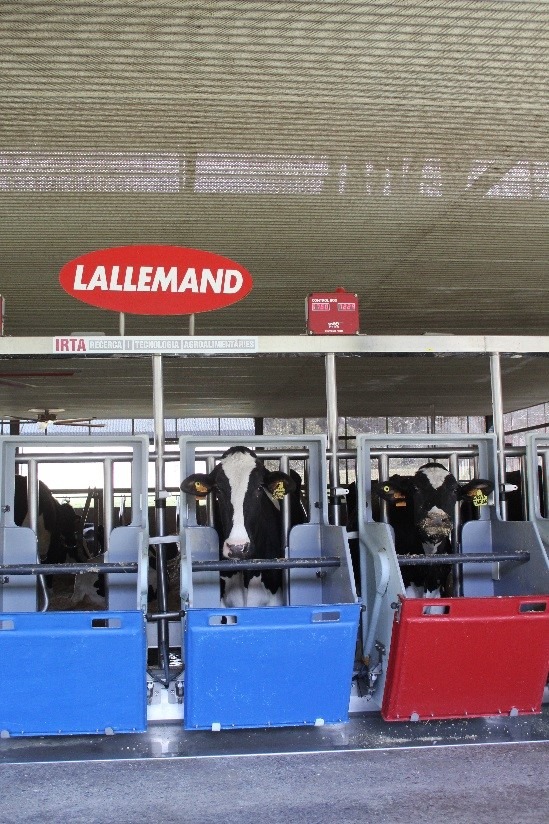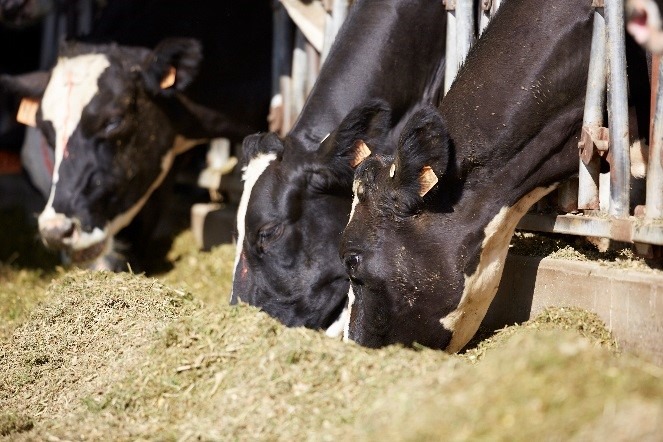Blog | Reading Time 2 minutes
Optimal silage preservation can help improve milk yield
 A recent independent study conducted at Blanca Dairy Hub located in the Pyrenees consisted of two experiments. The first part assessed the fermentation and aerobic stability impact when treating corn silage with a forage inoculant containing Lactobacillus hilgardii CNCM I-4785 (LH) and Lactobacillus buchneri NCIMB 40788 (LB) after nine months of fermentation compared to untreated control silage. The second part was a feeding trial to determine the effect of feeding a total mixed ration (TMR) containing the treated corn silage versus untreated corn silage.
A recent independent study conducted at Blanca Dairy Hub located in the Pyrenees consisted of two experiments. The first part assessed the fermentation and aerobic stability impact when treating corn silage with a forage inoculant containing Lactobacillus hilgardii CNCM I-4785 (LH) and Lactobacillus buchneri NCIMB 40788 (LB) after nine months of fermentation compared to untreated control silage. The second part was a feeding trial to determine the effect of feeding a total mixed ration (TMR) containing the treated corn silage versus untreated corn silage.
The results were clear, the corn silage treated with LH+LB significantly reduced the number of undesirable microorganisms that contaminate the silage — such as molds and yeast — compared to the control, resulting in greatly improved aerobic stability and reduced levels of undesirable bacteria (Table 1).
Table 1
| Treatment | |||
|---|---|---|---|
| Item | Control | Treated | Treatment x Time Interaction1 |
| Initial LAB2, CFUx10⁶/g | 55.4 | 22.8 | – |
| Initial mycelian fungi, CFUx103/g | 226.4 | 70.3 | – |
| Initial yeast, CFUx103/g | 171.1 | 96.8 | – |
| Increase LAB2, CFUx10⁶/g | 55.4 | 67.0 | 0.12 |
| Increase mycelian fungi, CFUx103/g | 56.4 | 7.6 | <0.01 |
| Increase yeast, CFUx103/g | 44.3 | 11.8 | <0.01 |
| Time to instability, h | 29.8 | 44.8 | 0.57 |
After opening, the LH+LB treated silage showed improved aerobic stability by 15 hours and decreased yeast and fungi populations compared to the control by 3.8 and 7.4 times, respectively.
Feeding Trial
The two silages were used in rations fed to 60 Holstein cows:
- 27 primiparous, 33 multiparous
- Average BW of 597±67 kg
- 127±41 days in milk
- Average milk production of 35.3±8.01 kg/d)
The cows were randomly allocated to a control TMR (untreated silage) or to a treatment TMR containing LH+LB treated silage. The study lasted 10 weeks with the first two weeks assigned as the adaption period. The performance of lactating cows was measured daily, and the results are shown in Table 2.
Table 2
| Treatment | P-value1 | ||
|---|---|---|---|
| Item | Control | Treated | TxW |
| Dry matter intake, kg/d | 22.7 | 22.3 | 0.99 |
| Eating time, min/d | 182.4 | 184.7 | 0.07 |
| Eating rate, g of DM/min | 127.1 | 119.3 | 0.16 |
| Milk yield, kg/d | 31.9 | 32.7 | 0.98 |
| Fat, % | 3.50 | 3.52 | 0.19 |
| Fat, g/d | 1120 | 1143 | 0.01 |
| Protein, % | 3.28 | 3.29 | 0.09 |
| Protein, g/d | 1059 | 1087 | 0.99 |
| ECM, 2 kg/d | 32.4 | 33.3 | 0.87 |
| Feed efficiency 3 | 1.49 | 1.55 | <0.01 |
For both treatments, the dry matter intakes were similar. However, the silage treated with LH+LB showed higher feed efficiency (0.06, P<0.01) compared to the control, which equates to an extra 60g of milk per every extra kilo of feed.
Summary
Using a forage inoculant containing LH+LB ensures the maximum feed value of the corn silage is retained for feedout. The combination lowers losses by lessening waste by improving aerobic stability, meaning the producer has more silage of better quality to feed.
Published Jul 17, 2020 | Updated Dec 5, 2023
Related articles
Need specific information?
Talk to an expert